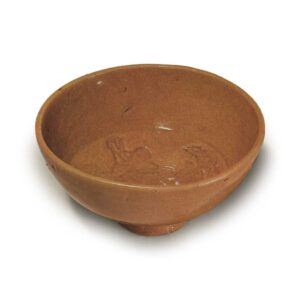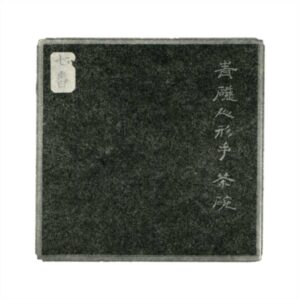


Attachment
Box, black lacquered, gold-filled, letterforms in gold powder
From the Koide Family, Nagoya Juuniya
Collection of Tea Ceremony Shodenshu, Meiri-so, Meimono Chawan Zukai by Fushimiya Sori, Meimono Meiri-kensho, Kushinroku Taisho Meikikan by Motoya Ryoun, Meimono Meiri-kensho
Dimensions
Height: 6.3-6.8 cm, Bowl diameter: 12.4-12.7 cm, Base diameter: 4.6, Height: 1.1 cm, Weight: 230 g
This doll came to the Koide family of Juichiya, a wealthy merchant in Nagoya, and is widely known as a Juichiya doll hand. The clay is reddish brown due to its high iron content. The clay is slightly different from that of the Longquan kiln, so it must have been fired in a kiln somewhere in Fujian or Zhejiang. The color of the glaze is so red that it is hard to call it celadon. The color of the glaze is so red that it is hard to call it celadon.
The glaze itself is celadon, but because it was fired in an oxidizing flame rather than a reducing flame, the iron in the glaze oxidized, giving it this color tone.
In China, this color is called “rice color,” and in Japan, it has been called hishite (hishote – red color) and highly valued since ancient times.
For Wabi-cha, the hishio color was preferred over the beautiful jade-colored celadon, as it was more suitable. The inside of the bowl has a molded design of a Chinese child and a broken branch of a Chinese flower.
This type of stamped design is used in many celadon kilns, including the Longquan kiln.
Box, black lacquered with gold lettering



